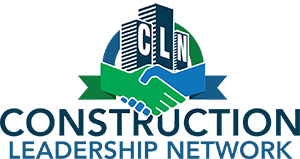
Sean Lundy, President & CEO of MP Lundy Construction, Inc.
Sean Lundy is President & CEO of the 2021 winner of Canada’s Best Managed Companies—MP Lundy Construction, Inc.—an Ottawa-based general contractor, construction manager, and design-builder. Sean is a long-time advocate of win-win sharing, an inaugural member of the Construction Leadership Network, and a member of CLN’s Steering Committee. Here are seven strategies for reducing the cost of construction projects that Sean has recently shared with Owners:
In more than three decades of planning and delivering construction projects, I have yet to encounter a client who wasn’t, at least to some degree, concerned about the cost of their project. In recent months, we’ve seen unprecedented volatility in the construction industry, and this is a major financial pain point for buyers of construction services.
Before getting too far into the weeds on your next major project, I invite you to consider the following seven proven cost-saving strategies. These can be used together or individually, depending on the specific requirements of your project.
Strategy 1: Prioritize Robust Up-Front Planning
Our industry is renowned for taking a “shoot from the hip” approach to project delivery rather than a planful one. Planning a complex construction project is difficult and takes a great deal of focus. This is probably why so many try to shortcut this essential discipline. If you are serious about saving money on your project, you must find a builder who is prepared to invest the necessary time and energy into planning the work before starting on-site. I’m talking about a deep dive into sequencing, logistics planning, design analysis (to make sure it’s buildable), interference analysis between design disciplines, risk identification, risk mitigation plans, long-lead delivery items, detailed costing analysis, and human resourcing. I believe this effort has the power to be the single greatest impact on how much your project will cost.
Strategy 2: Don’t Underspend on Design
The construction industry is competitive at every level, including design services. There is no shortage of capable architects and interior designers to choose from—and they have all been conditioned over time to be judged primarily on price. The reality is that no architect, designer, or engineer, is going to give your project the time it needs unless they are appropriately compensated. It is in your best interest to pay for (and insist on) well-thought-out, properly coordinated plans. Properly coordinated means the architect has taken the time to sit with all the other consultants (structural, civil, landscape, mechanical, electrical, and IT) and has done the hard work of making sure their design elements won’t clash with each other. An example of this would be a plumbing pipe being designed to occupy the same space as a steel beam. While there is no such thing as a perfect set of drawings, there is nothing more aggravating for an owner than to pay for these types of mistakes to be fixed after your project has already begun.
Strategy 3: Look for a Builder with VDC Capabilities
Similar to the point above, buyers of construction services should look for a builder who is highly capable in what has become known in the industry as VDC (Virtual Design and Construction). You could refer to VDC as “next level planning through technology and visualization.” While 3D technology has become ubiquitous with designers, it is still conspicuously absent in the builder community. A VDC-capable builder will have the ability to use various pieces of software to ramp up design analysis to the degree that problems and mistakes on the drawings are uncovered early. This is important because issues discovered late in the construction process interrupt the flow of the work and more often than not, result in additional costs by way of change orders. Issues found early, on the other hand, can often be fixed for no cost to the project at all. Please allow me to help connect the dots: If you have found a VDC-capable builder, chances are you have found one who is heavily invested in the benefits of upfront planning—and this equals cost savings.
Strategy 4: Say No to Silos—Promote a Collaborative Team Effort
Silos within your project team are silent killers of your construction budget because they reduce the level of critical communication. When designers, construction managers, trades, and suppliers focus only on their own work, and not how their work interrelates to the work of others, they inadvertently create problems that must eventually surface downstream on the project. Dealing with issues late in the process, or just as the work is happening, is the most expensive time to do so because change orders are generally the only option at that point. When enough wrong assumptions surface, chaos reigns on the construction site and your money is the silver bullet. Your defense against silos is to hire a builder who has a proven system that promotes the right conversations at the right time. It sounds simple but it takes a great deal of experience to do this effectively.
Strategy 5: Pay for a Proper Pre-Design Site Investigation
This could be considered the golden rule of renovation projects. In my experience, for every dollar you spend on a pre-design investigation (such as removing ceilings or punching holes in walls to see hidden existing conditions), you save ten. If you spend $5K on site investigations, you’ll save $50K. Spend $50K on a larger job, and you will save $500K—probably more. The concept is simple—if your designers are designing based on clear information, then the risk of site condition change orders goes way down. In addition, your project schedule won’t have to suffer through redesign and rework either—which is more money in your pocket. If you’d rather fix problems at the 11th hour, pay a premium for this work, and see your schedule go out the window, don’t bother with this strategy.
Strategy 6: Hire a CM Who Practices Visual Planning
From the early days of the Lean Construction Institute, Glenn Ballard and Gregory Howell developed a system referred to as The Last Planner. This was motivated by the realization that across all American and Canadian construction sites, only 50% of planned tasks were being accomplished in a given week. This horrifying statistic is clearly to blame when you hear about projects taking much longer to complete than originally planned. Simply stated, visual planning engages the builder and all trades in a realistic conversation about timing, sequencing, and constraints. This is done in a structured way using visual planning boards mounted on a wall. This work drives much higher timeline predictability because trades who are given a voice at the planning table are much more likely to keep their commitments. Incorporating visual planning into a project can be challenging. It flies in the face of decades of precedence in which general contractors decided on schedule logic and timelines, imposing both by force on the trades. In short, seek out a builder with a track record for making visual planning part of every project. This will be the candidate with the best chance of finishing your project on schedule.
Strategy 7: Leverage the Power of the Right Trades
While we gladly take credit for our contribution to the success of our projects, there is no dispute: we rely heavily on the professional, committed, and innovative trade contractor partners who work with us to make it all happen. The fact is, choosing the right trade partners is a make-or-break factor for project success. Therefore, we continually look for ways to strengthen our relationships with the best trades in the city. I believe that if your project has a roster of strong trades, you are halfway to phenomenal success. All that’s needed is a builder who is focused on planning and great at leading. And this takes us back to strategy one again…
Astute buyers of construction services know that hiring the right team and promoting a positive team culture will make all the difference in keeping construction costs in check. While every project has its unique set of requirements and challenges, these seven strategies are found at work in every successful project. If you are looking ahead to your next construction initiative, I invite you to weave them into your requirements and use them as a tool when interviewing your building team.


